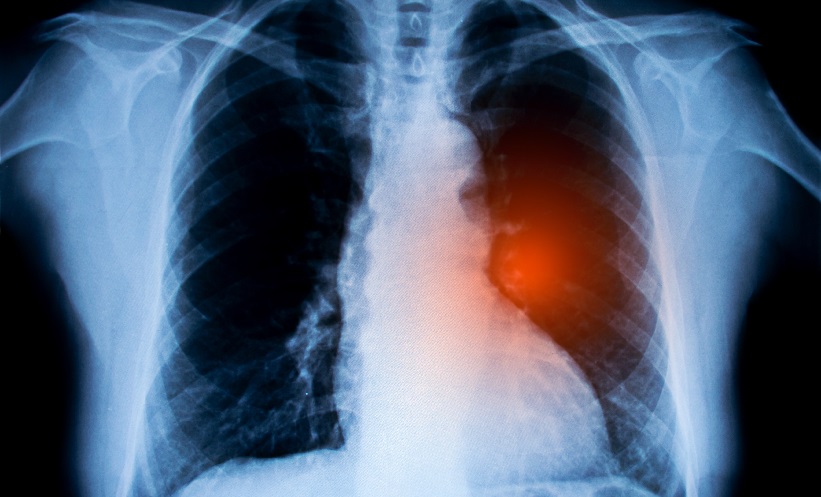A NEW study has highlighted the prognostic value of tumour location in patients undergoing surgery for lung adenocarcinoma, using automated imaging analysis to better define what constitutes a “central” tumour. Lung cancer remains one of the leading causes of cancer mortality globally, and improving risk stratification following surgery is essential for guiding follow-up care. The large retrospective analysis identified a significant association between central tumour location and poorer clinical outcomes, with implications for postoperative surveillance strategies.
Researchers retrospectively analysed CT scans from 1,796 patients who underwent lobectomy or pneumonectomy for invasive lung adenocarcinoma between July 2010 and December 2019. An automated lung segmentation algorithm divided the lungs into three concentric zones. Radiologists reviewed tumour location based on two reference points, tumour centre and medial margin, and applied four definitions of centrality. Tumours were considered central if located within the inner third or inner two-thirds of the lung, depending on the definition. The study examined associations between tumour location and recurrence patterns, recurrence-free survival (RFS), and overall survival (OS), adjusting for known prognostic factors including nodal status.
According to the most stringent definition (centre within the inner one-third), only 8.2% of tumours were considered central. Under broader definitions, this rose to 79.4%. Tumour centrality was significantly associated with increased locoregional recurrence using definitions 1 (sHR:1.75; p=0.004) and 3 (sHR:1.44; p=0.01), but not with distant recurrence. Worse RFS was observed for central tumours by definitions 1 (HR: 1.52; p<0.001) and 3 (HR: 1.28; p=0.003), while OS was poorer under definition 1 (HR: 1.45; p=0.02). Notably, these associations remained significant in patients with pathologic stage I disease, underscoring their clinical relevance even in early-stage lung cancer.
These findings suggest that tumour location, particularly when defined by the tumour centre within the lung’s inner one-third, provides independent prognostic information beyond standard staging. For clinicians, this may justify more intensive postoperative surveillance for patients with centrally located tumours, even in early-stage disease. However, limitations include the retrospective design and reliance on a single institution’s data. Further prospective studies are needed to validate these findings across broader populations and to determine whether surveillance strategies should be formally adjusted based on tumour location.
Reference
Ahn Y et al. Central Tumor Location in Resected Lung Adenocarcinoma: Association with Recurrence and Survival Outcomes. AJR Am J Roentgenol. 2025;DOI: 10.2214/AJR.25.33503.







